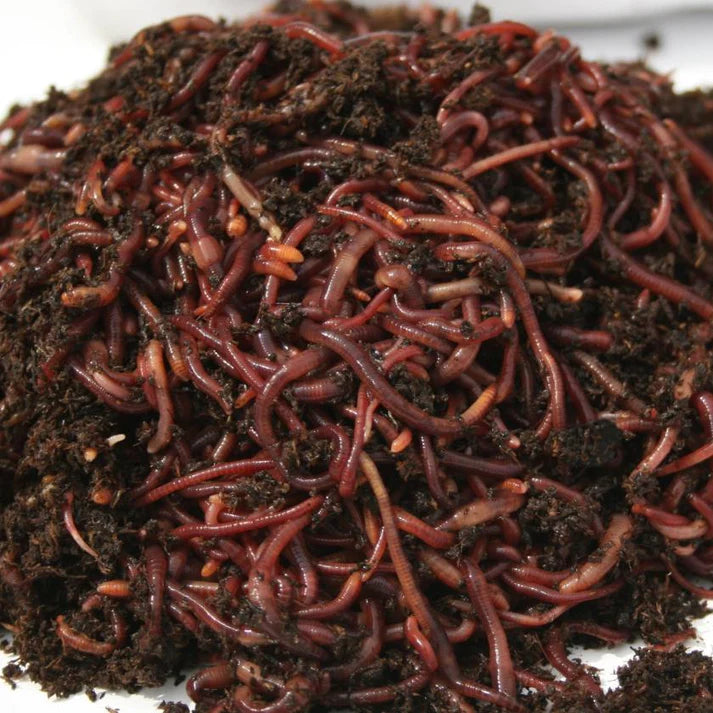The Only Guide to Red Wiggler Express
Table of ContentsNot known Details About Red Wiggler Express Our Red Wiggler Express IdeasAbout Red Wiggler ExpressThe Greatest Guide To Red Wiggler ExpressSome Known Details About Red Wiggler Express Red Wiggler Express - Questions
Red wigglers and compost worms' preferred foods are most fruits - they particularly enjoy bananas, strawberries, raspberries, blueberries, peaches, and melons! Yes - however we advise feeding potato peels to worms in moderation (Red Wiggler Express). Potato peels are starchy and don't damage down quickly so they can take a while for the red wigglers to failure and consumeWe feed our worms at Brothers Worm Ranch two times a week, and the majority of us do the very same with our worm bins in your home. Red wigglers have a tendency to consume even more when temperatures are modest (60-80 levels), so you might locate a need to feed them extra during these periods. If you are leaving for trip or a trip and are stressed concerning your worms, there are a few things you can do to guarantee their survival.
Bed linen can be the initial type of bed linens you utilized or a number of handfuls of shredded cardboard. Provide the surface area of the bed linen a heavy misting so the bedding doesn't dry out.
Red Wiggler Express Things To Know Before You Buy
Place a piece of cardboard over the surface area of the bin (this will help it retain moisture). If you are leaving for even more than 2 weeks, we suggest having a buddy or relative feed and water the worms every 1.5 weeks while you are gone. You can leave food for the worms in the refrigerator and a little spray container for watering.
Many thanks for reading and happy farming!.
Red worms are nature's best composting worm and an excellent choice for worm farms. Red worms go by lots of names. They're commonly called red wigglers, tiger worms, manure worms, composting worms, and the trout worms. Whatever you call them they're among the most effective composting worms available. Both very first time and seasoned worm farmers select the red worm for numerous factors.
Getting The Red Wiggler Express To Work


Red worms have several buildings which make them perfect for the garden compost container. Of all the worms appropriate for worm farming the red worm is the most adaptable and passionate.
Rotting fallen leaves, turfs, timber, and animal manure are all favorites of red worms. The red worm's voracious hunger makes it the champ of the garden compost container and an online worm spreading (a.k.a. worm poop) devices.
Red worms like to reside in nests, usually gathering into a twisting mass around a food resource. Preserving this close contact makes them prolific breeders and an excellent breed to increase in your worm ranch. A 24" x 24" worm container can conveniently house over 1000 red worms. Nonetheless for those thinking about increasing lure worms it's good to keep in mind that crowded red worms will certainly stay relatively skinny and brief.
Red Wiggler Express - The Facts
An additional benefit of red worms is their capacity with stand a large range of temperature extremes. When the temperature dips red worms need to be shielded from freezing climate.
That can be as simple as maintaining them in trench filled with aged manure and covered with straw or leaves. ; when temperatures surge maintain your worm farm cool. If your bedding overcomes 85 levels red worms will attempt to leave your bins for cooler areas. So give them with color or preferably relocation them right into your cellar.
Like all worms red worms breathe oxygen via their skin. A moist environment also promotes the malfunction of organic issue in their bed linen product by microbial life forms.
A worm ranch packed with red wigglers is an outstanding means to compost food scraps, left overs, garden waste, and leaves. Feeding redworms is rather very easy, yet there are some fundamental but crucial things to bear in mind in order to keep you worm ranch healthy. In this section we will cover what you must and must not be feeding your worms.
Examine This Report on Red Wiggler Express

Yet before dropping off all the required reproductive products are scooped up right into the ring. When the mucus ring leaves the worm the end seals up, causing it to taper at one end, causing the familiar lemon shape of the cocoon. Over the following 20 days the cocoon dims and hardens.
Like all worms red worms breathe oxygen through their skin. A wet environment also assists in the breakdown of organic matter in their bedding product by microbial life kinds.
A worm farm packed with red wigglers is a superb means to compost food scraps, left overs, yard waste, and leaves. Feeding redworms is quite simple, yet there are some standard however important points to keep in mind in order to maintain you worm farm healthy. In this area we will certainly cover what you must and must not be feeding your worms.
7 Simple Techniques For Red Wiggler Express
During mating worms slide along each various other up until their clitellum are aligned. They hang on per various other with bristle like hairs, called setae, located on their underside. While accepted they exchange reproductive critical fluids which is saved for later usage. During the breeding session, which lasts for regarding 3 hours, the worms secrete mucous rings around themselves.
